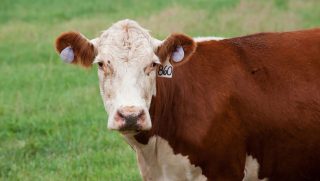Food waste is estimated at between 30 percent and 40 percent of the food supply in the United States. That amounts to approximately 133 billion pounds of food worth $161 billion each year.
Food loss occurs throughout every stage of the food production and supply chain. Whether it be due to spoilage, issues during growing, harvesting, processing, and transporting, or retail and consumer food loss due to over-ordering and throwing out extras, food loss at every level is an issue.
These challenges have led to innovations within the food industry to help reduce food waste in many different ways. From delaying spoilage to utilizing byproducts that would otherwise end up in a landfill, here are just a few ways many different areas of the supply chain are improving to help reduce food loss.
Innovative produce coating
Apeel is an example of an innovative plant based coating that can be applied to the outside of various fruits and vegetables in order to slow water loss and oxidation, which are the primary causes of spoilage. This edible layer consists of purified monoglycerides and diglycerides that are naturally present in many different foods. These compounds can be found in the peels, seeds, and pulp of fruits, vegetables, and other plants as well as common cooking oils, such as olive and coconut oil.
The coating extends the shelf-life of produce so that there is more time in the supply chain downstream from where the product is applied. It allows retailers to have more time to sell their produce and consumers to have more time to enjoy it before it spoils.
Upcycled food
Another effort by the food industry to help reduce food waste is by finding innovative ways to utilize upcycled foods. Upcycled foods use the surplus ingredients or byproducts from food manufacturing that are typically thrown away to make new products for human consumption. A team of experts from Harvard Law School, Drexel University, World Wildlife Fund, Natural Resources Defense Council, ReFED, and others officially defined “upcycled food” in 2020 for use in policy, research, and more: “Upcycled foods use ingredients that otherwise would not have gone to human consumption, are procured and produced using verifiable supply chains, and have a positive impact on the environment.”
Upcycled foods: 1. Are made from ingredients that would otherwise have ended up in a food waste destination. 2. Are value-added products. 3. Are for human consumption. 4. Have an auditable supply chain and 5. Indicate which ingredients are upcycled on their labels. Some examples of upcycled foods include seed flours and oils that are created from the seeds removed during production of seedless purées, snacks and beverages made from cacao fruits upcycled from chocolate production and veggie chips made from the pulp of cold-pressed juices.
Retail action plans
Retail chains like Kroger have put action plans into place that aim to reduce food waste. Rescuing surplus fresh food from stores for donation to local hunger relief agencies, marking down the prices of foods as they reach their use by dates and expanding food waste recycling are just a few of the goals in their “Zero Hunger | Zero Waste” social and environmental impact plan.
Walmart is aiming to eliminate food waste by 2025 by increasing the sell-through of its food products through strengthened forecasting and ordering tools, in addition to converting food that’s no longer edible to animal feed, compost, or energy. The 10x20x30 initiative brings together over 10 of the world’s largest food retailers and providers, each engaging at least 20 suppliers to halve food loss and waste by 2030. This approach supports upstream food loss and waste reduction. Each of the food retailers, providers, and suppliers has committed to the “Target-Measure-Act” approach where they set a target of reducing food loss and waste in their own operations by 50 percent, measure and publish their food loss and waste inventories, and take action to reduce their waste.
Standardized date labels
Many consumers don’t know this, but with the exception of infant formula, product dating on food packaging is not required by federal regulations, which I explain here. Manufacturers provide dating to help consumers and retailers decide when food is of best quality. Except for infant formula, dates are not an indicator of the product’s safety and are not required by federal law. Examples of commonly used phrases include: “Best if Used By/Before,” “Sell-By,” “Use-By” and “Freeze-By.”
Confusion over date labeling has been estimated to account for approximately 20 percent of consumer food waste. In January 2017, the Grocery Manufacturers Association (GMA) and Food Marketing Institute (FMI), along with 25 consumer packaged goods and grocery retail companies recommended the use of two introductory phrases for product date labels: “Best If Used By” and “Use By.” The group recommends “Best If Used By” be used to “indicate to the consumer that, after a specified date, the product may not taste or perform as expected but is safe to be used or consumed.” They recommend that “Use By” “applies to perishable products that should be consumed by the date on the package and discarded after that date.”
In a December 2018 consumer survey on the impact of the streamlined labels, GMA found that 88 percent of those surveyed said the streamlined product date labels were clear to them and 85 percent said the streamlined product date labels were helpful. This date labeling initiative is a key step in reducing food waste. The FDA supports the food industry’s efforts to standardize the use of the term “Best if Used By” on its packaged-food labeling if the date is simply related to optimal quality rather than safety.
Food waste is a challenge starting with the grower all the way through to the consumer, and there are many opportunities along the way that the food industry, in addition to consumers, can help to reduce these losses. These are just a few of many ways the industry is combating excessive food waste, and in order to make a real impact, it will require all stages of the supply chain to work together towards a common goal.
Food Science Babe is the pseudonym of an agvocate and writer who focuses specifically on the science behind our food. She has a degree in chemical engineering and has worked in the food industry for more than decade, both in the conventional and in the natural/organic sectors.



